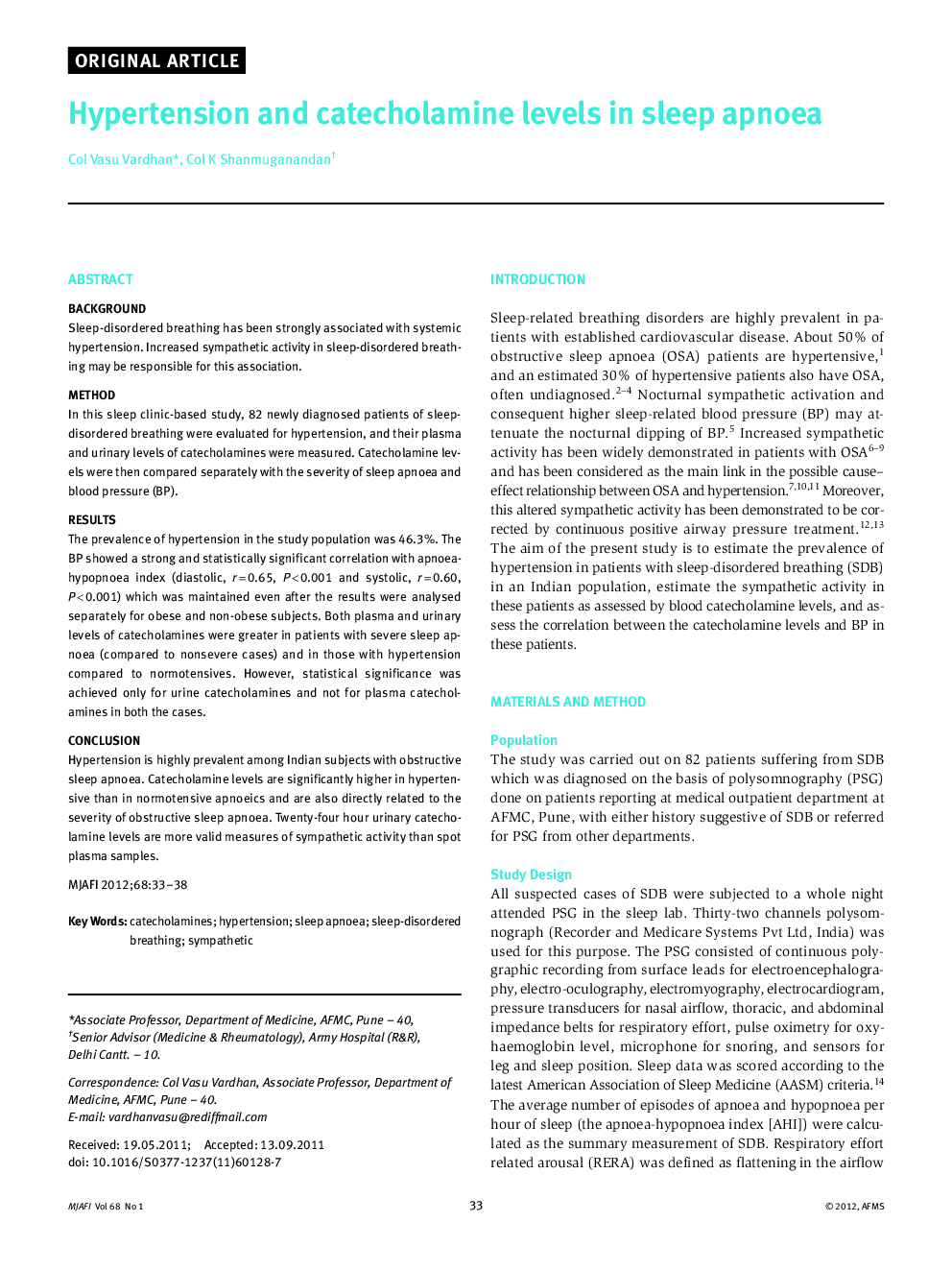| Article ID | Journal | Published Year | Pages | File Type |
|---|---|---|---|---|
| 3161741 | Medical Journal Armed Forces India | 2012 | 6 Pages |
BackgroundSleep-disordered breathing has been strongly associated with systemic hypertension. Increased sympathetic activity in sleep-disordered breathing may be responsible for this association.MethodIn this sleep clinic-based study, 82 newly diagnosed patients of sleep-disordered breathing were evaluated for hypertension, and their plasma and urinary levels of catecholamines were measured. Catecholamine levels were then compared separately with the severity of sleep apnoea and blood pressure (BP).ResultsThe prevalence of hypertension in the study population was 46.3%. The BP showed a strong and statistically significant correlation with apnoea-hypopnoea index (diastolic, r = 0.65, P < 0.001 and systolic, r = 0.60, P < 0.001) which was maintained even after the results were analysed separately for obese and non-obese subjects. Both plasma and urinary levels of catecholamines were greater in patients with severe sleep apnoea (compared to nonsevere cases) and in those with hypertension compared to normotensives. However, statistical significance was achieved only for urine catecholamines and not for plasma catechol-amines in both the cases.ConclusionHypertension is highly prevalent among Indian subjects with obstructive sleep apnoea. Catecholamine levels are significantly higher in hypertensive than in normotensive apnoeics and are also directly related to the severity of obstructive sleep apnoea. Twenty-four hour urinary catecholamine levels are more valid measures of sympathetic activity than spot plasma samples.
